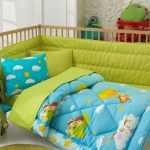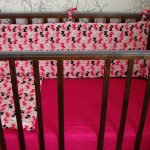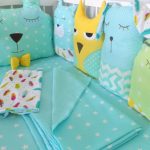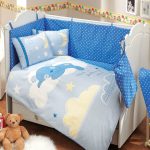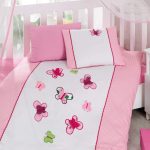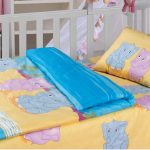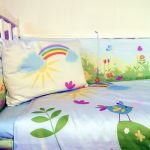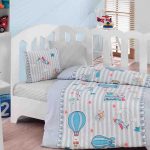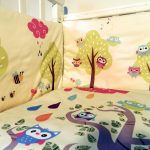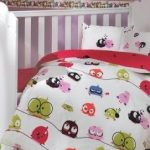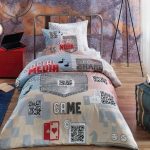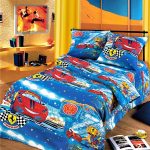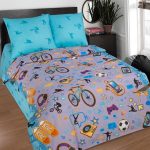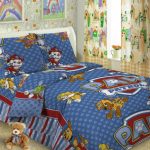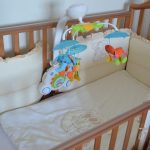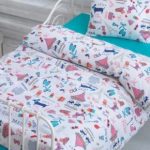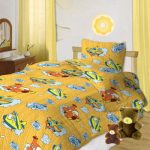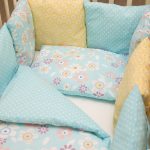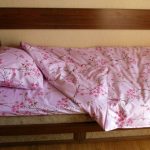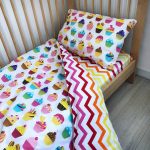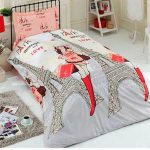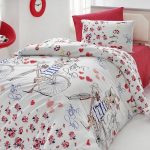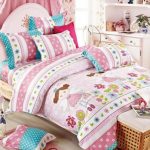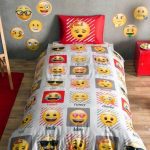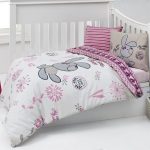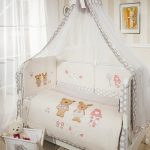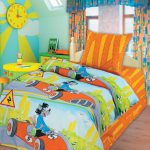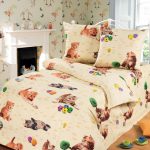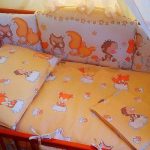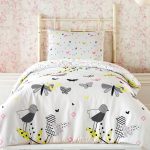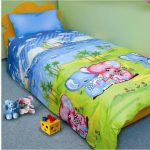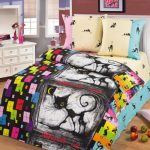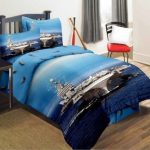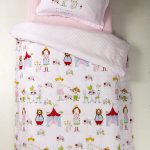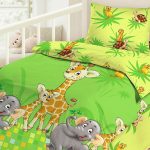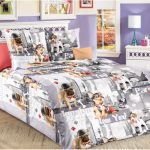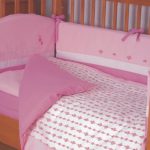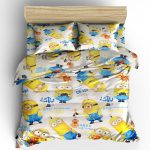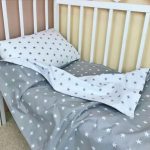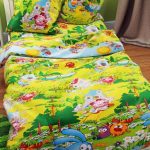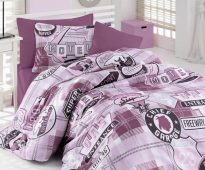 How to quickly fill the blanket in the duvet cover
How to quickly fill the blanket in the duvet cover
Sewing baby bedding
Many young mothers are interested: it is better to buy ready-made baby bedding or sew it yourself. In order to understand which option is preferable, it is necessary to compare all the advantages and disadvantages of such a choice. The cost of the finished bed set is much higher than the materials for sewing separately. When choosing fabrics, the baby's mother will be able to pick up a material of good quality, the desired colors and patterns.
This option will become a “wand” if the bed, a newborn or a child is older, has a non-standard size and cannot be bought in bed size. It is also a good motivation for applying your skills in needlework or for mastering something new, useful. Moreover, it is easy to sew a set of bed linen, even for a beginner, the recommendations given below will help you achieve what you want.
Content
- 1 Choosing the right fabric
- 2 Fabric consumption when sewing
- 3 How to sew bed linen in the crib with their own hands
- 4 Tips to help stitch baby bedding
- 5 Video: Sewing baby bedding with your own hands
- 6 A selection of beautiful and original children's bedding sets for inspiration and making their own hands:
Choosing the right fabric
It is necessary to consider only high-quality, natural fabric. Preference should be given to those species that meet the following requirements:
- hypoallergenic;
- environmental friendliness;
- comfort;
- air permeability;
- ease of care.
The best option would be a fabric made from 100% cotton. Cotton bedding is suitable for both summer and winter time. Varies according to weaving.
| Variety | Benefits | disadvantages |
| Calico | Hypoallergenic | Coarser than other types of cotton fabrics |
| Wear resistant | ||
| Excellent breathable | Improper washing can cause molting. | |
| Chintz | Natural | Wear out quickly |
| Soft and pleasant to the touch | ||
| Possesses good air permeability and moisture absorption | Over time, it loses its initial brightness. | |
| Does not need special care. | ||
| Satin | Differs in good wear resistance. | – |
| Does not accumulate static electricity | ||
| Not wrinkled | ||
| After washing, it retains its former appearance. | ||
| Differs in heat conductivity | ||
| Linen | Eco-friendly | Tougher other materials |
| Keeps warm | High price | |
| Perfectly absorbs moisture | Hesitates quickly | |
| Bamboo | High strength | High cost |
| It has antimicrobial and anti-tick properties. | ||
| Able to neutralize odors and absorb moisture |
Interesting fact! If to compare the presented fabrics, the bamboo will be better than the others. This is noticeable by its unique beneficial properties. The only downside is the price.
Fabric consumption when sewing
In order to immediately purchase the required amount of fabric you will need to measure out each item:
- pillow;
- a blanket;
- mattress;
- crib.
You can also measure already existing bedding. So it will save a lot more time.

An example of how bed linen can be cut into a one-and-a-half set
There are standard bed sizes for older children and newborns. You can navigate by these numbers.
| Laundry components | Newborns | Older than a year |
| Pillowcase | 40 × 60 | 50 × 70 |
| The sheet | 110 × 140 | 150 ×210 |
| Duvet Cover | 100 × 140 | 150 × 210 |
Important! It should be remembered that you need to buy material with a margin of 10-15 cm. The fabric tends to sit down after washing, so you need to wash it, dry it and iron it before sewing.
How to sew bed linen in the crib with their own hands
Before you start sewing bedding should prepare all the necessary materials and tools. The following items will be required:
- fabric (the approximate length of the canvas with a width of 1.5 m will be 4 - 4.5 m);
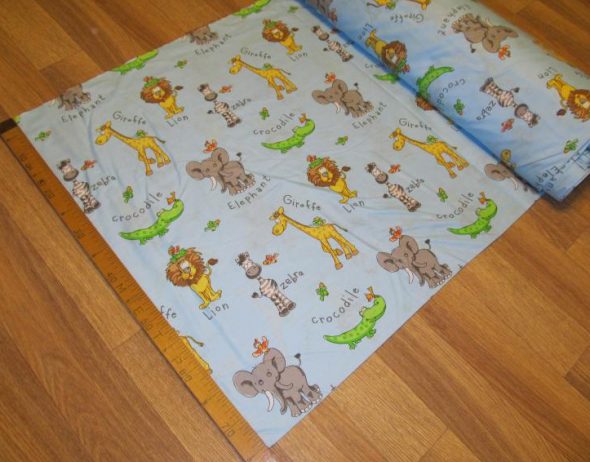
Fabric for tailoring of a set of children's bed
- thick fabric (for sides);
- threads;
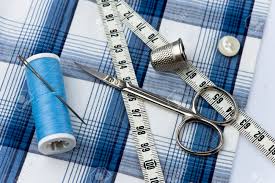
Tools and consumables for bedding
- sewing machine;
- tape measure;
- needle;
- scissors;
- long ruler;
- pins;
- chalk or remnant;
- foam rubber (synthetic winterizer);
- steam iron (desirable).
You also need to stock up on free time, desire, good mood and, most importantly, patience. Then everything will work out, and the workflow will take only pleasure.
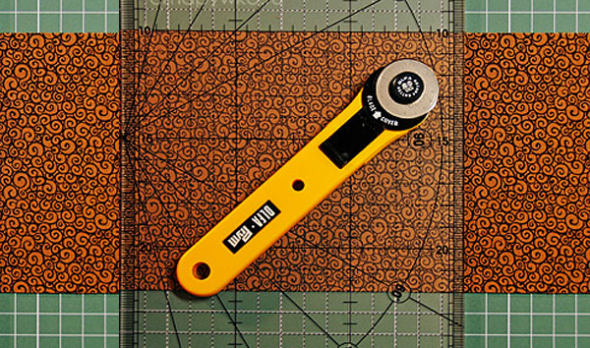
Cutting - the moment is no less responsible than the calculation of the consumption of fabric
Sewing pillowcases
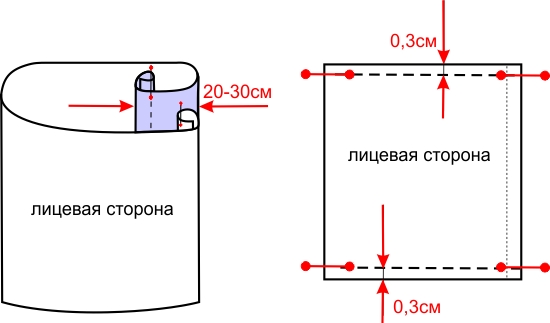
Pattern pillow cases with basic allowances and an internal flap
To sew a pillowcase is not difficult, if you stick to accuracy. To do this, gently fold the pattern.
- It is necessary to measure 70 × 50 cm of fabric from the whole web and fold it face down.

Cutting fabric for two pillowcases with a turn
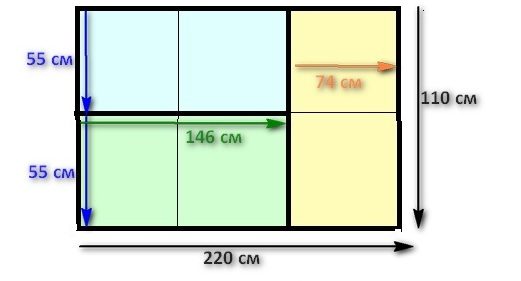
Cutting fabric for three zippered pillowcases
- The remaining corner of 30 cm should be turned to the top (this will make a valve that will fix the pillow in the pillowcase).
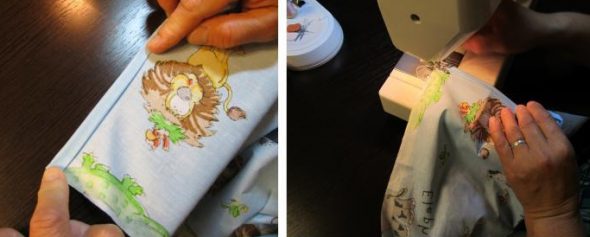
Two short sides of the future pillowcase are individually processed with the help of a hem with a closed cut

We put a smell on top of the already folded halves of our pillowcases
- After you need to exactly fold the sides of the pillowcase and stitch. First, the seams are made on the front side, and then on the wrong side. Then the product is durable.
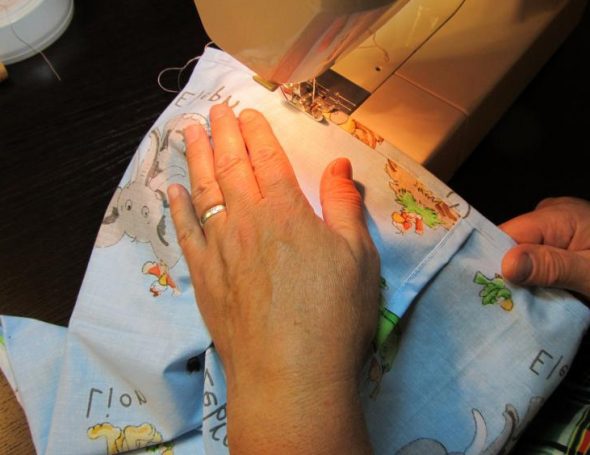
We do podgib, we outline, we lay side lines on the machine
- When the pillowcase is ready, it will need to be ironed with a steam iron.
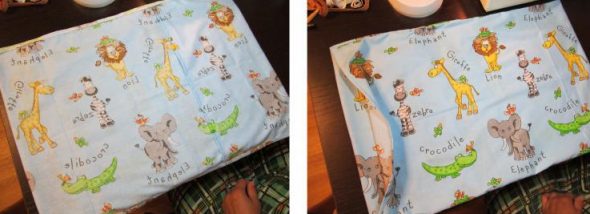
Finished Product - Foldable Pillowcase
Sewing sheets
Sheets for the crib can be sewn in several ways:
- plain rectangular;
- on an elastic band.
To sew a sheet in the first way is easy.
- It is necessary to cut a certain size of fabric and make allowance of 1-2 cm on each side. The cut will be 145 cm long and 115 cm wide.
- Now you can take up tailoring sheets. On each side, you need to tuck the fabric 1 or 2 times (depending on the model of the machine, if it does not have an overlock, you have to tuck it 2 times) and hem it. If there are finished edges on the fabric, but they look bad, it is better to hem these sides.
- The finished product is also proglazhivaetsya, special attention should be paid to the treated edges. They should be smoothed carefully.
The second option sheets suitable for very active kids. Sheet with an elastic to sew harder, but if you follow the instructions - everything will turn out.
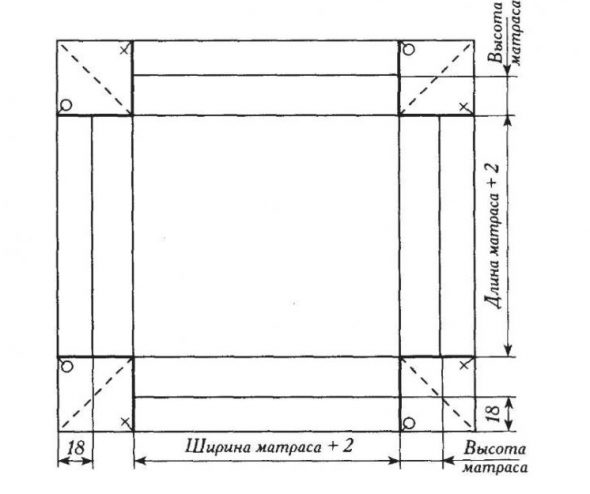
Pattern sheets with elastic with allowances and sizes
- You will need a cut size of 120 × 150 cm.
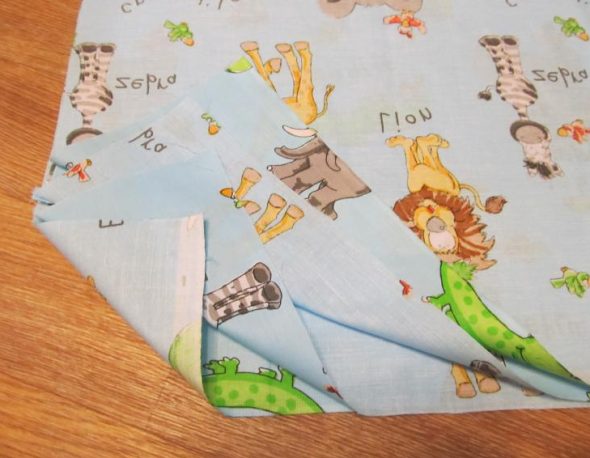
We fold the canvas for sheets in half, and then again in half
- It needs to be folded 4 times and in the upper right corner measure a square of 20 × 20 cm, and then cut it with scissors.
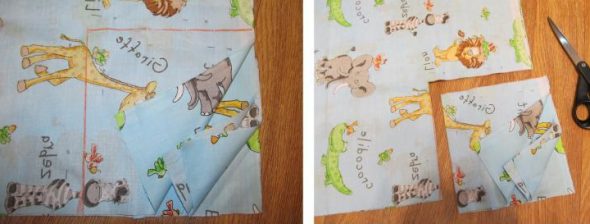
Draw a square of 20 cm * 20 cm, we pin the fabric on both sides of the marked lines and cut a corner
- The next step is to handle the corners. They need to sew and overlay.
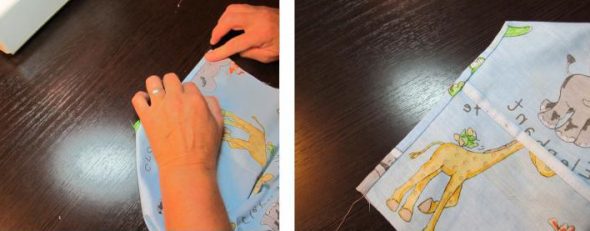
Fold the cuts with the front sides, remove the hem with the closed cut, stitch
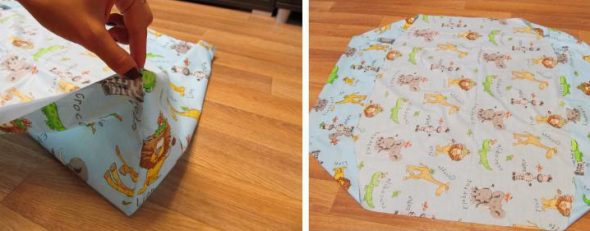
This is how the corners of our sheets look after processing.
- All parties must be hemmed up leaving space for the elastic, after which it will need to be threaded. Thus, the edges of the sheets will gather and form a "cover", which will cover the mattress.
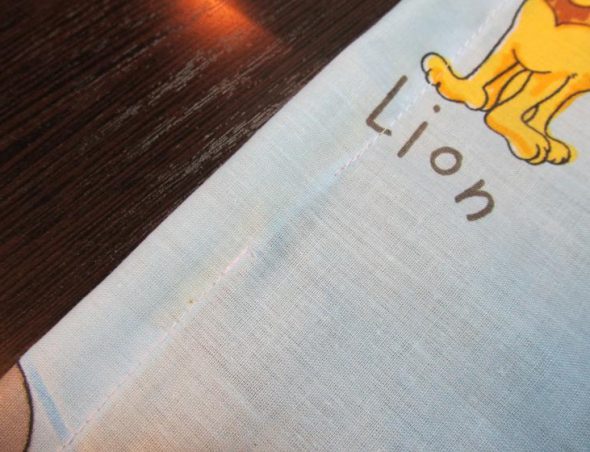
Make a hem along the entire perimeter of the sheet with a closed cut in order to fit the gum
Important! Sheets will be well fixed and will not crumple under the baby.
- The final stage. Gum should be inserted into the finished product and stretch along the entire perimeter, and then sew the edges. At the end of the sheet you need to iron, so that it takes the desired shape.
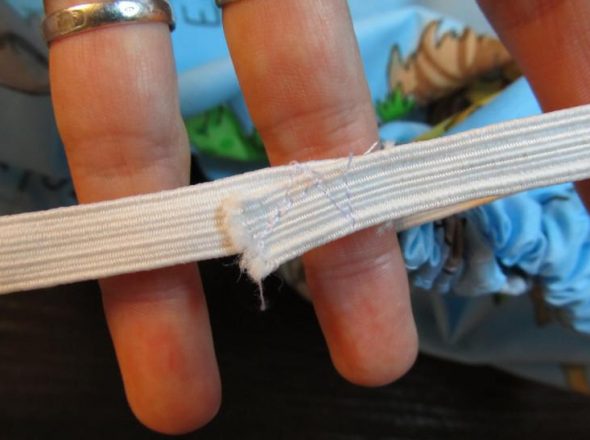
We put the elastic in the sheet, straighten and fasten the ends with each other with several stitches.
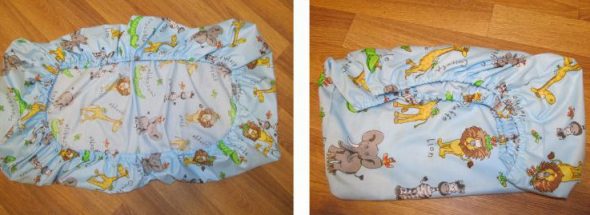
Ready baby sheet with elastic
Duvet Cover Tailoring
To sew a duvet cover for a bed set, you will need a fabric measuring 200 × 280 cm. It is important to insert a blanket in the prepared piece of fabric and determine that the duvet cover matches the size of the blanket.
- The finished cut of fabric must be folded in half, process the top and bottom sides.

We expand the fabric, fold it face-to-side across, so that the tissue sections are stacked with each other
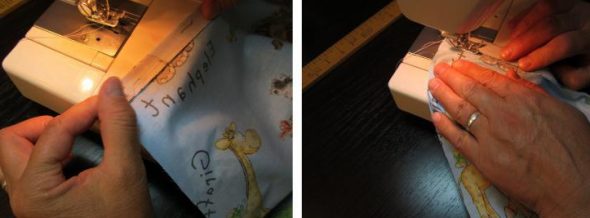
We process two short sides of the duvet cover; we make seams with an open hem
- On the side should be left 40-50 cm for a hole under the blanket, and the remaining parts are also processed.
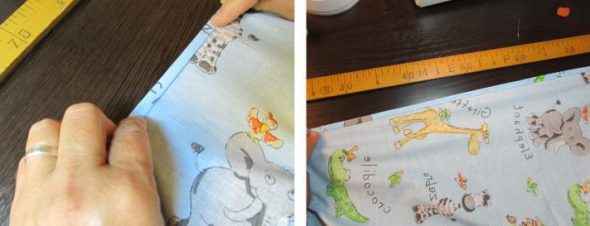
We process the entrance - turn down one layer of fabric on the inside and process it between two marks with a hem with a closed cut, repeat the same on the other side
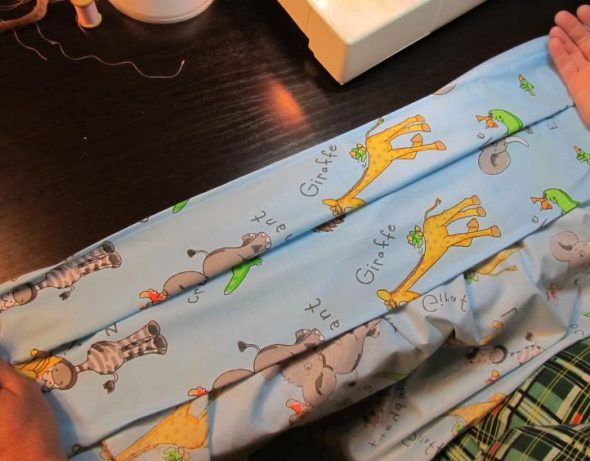
Make on each side of the "entry" line from label to label
- At will the hole can be sheathed with a beautiful ribbon.
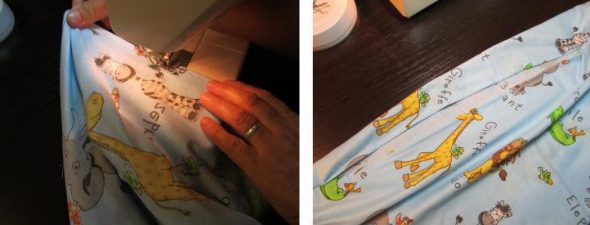
We sweep away the cuts on both sides of the “entrance” with a hem with a closed cut, lay the lines
- As the previous components of bed linen duvet cover must be ironed iron to straighten all the seams.
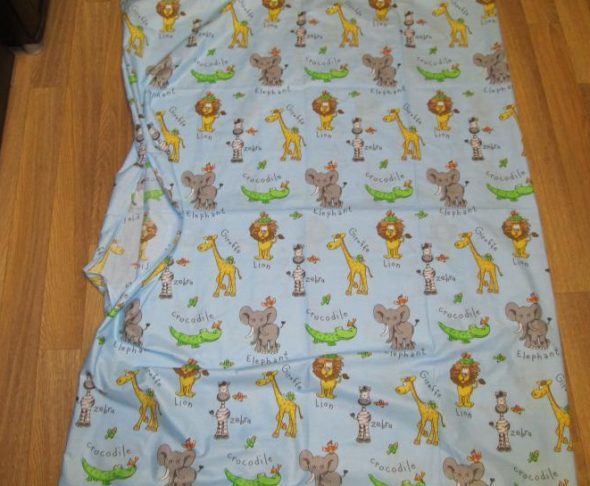
Our duvet cover for baby bed is ready
Tailoring of sides in a bed

Description, scheme and main sizes of sides in a bed
Bumpers are a very useful thing. They allow you to protect children from damage to the strings of the bed. Now, many parents are trying to equip the baby's sleeping place with elements such as bumpers. They require a fabric much more dense than for bed linen. Therefore, it needs to be bought separately, choose among dense types of material.
- It is necessary to make a pattern with the hands. It assumes a rectangular shape. For the long sides of the bed, a 40 × 60 cm canvas is cut, and for the short sides - 40 × 60 cm.
- The edges of the canvases need to be processed by stitching a thick ribbon or string to each corner (in this way the bumpers will be tied to the bed).
- Finished products should be turned outside and then filled in the “pockets” with foam rubber or padding polyester. It must be prepared in advance. It is necessary to measure the foam rubber correctly so that it fits the size of the rim.
- Then the lock is inserted into every detail. This action is necessary so that when you wash the foam can be pulled out. So he will not get off in one side. It will turn out to expand and bumpers will always be in excellent condition.
Tip! For the sides, you can sew covers, which from time to time will need to be removed and washed. Then there is no need to sew in the side zipper. Covers will be sewn in the same way as the sides, only 2-3 cm more, so that the sides freely enter the covers and do not wrinkle there.
Tips to help stitch baby bedding
Linen should be free of any textured decor (locks, zippers, velcro, buttons, buttons). So a child can harm himself, stick a part in his mouth (swallow it or choke).
No need to glue on the duvet cover or sheets of various applications. This option is not practical. When washing items may fall off or lose an attractive appearance.
Video: Sewing baby bedding with your own hands
A selection of beautiful and original children's bedding sets for inspiration and making their own hands:
 How to quickly fill the blanket in the duvet cover
How to quickly fill the blanket in the duvet cover
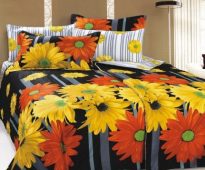 Bed Size Table
Bed Size Table
